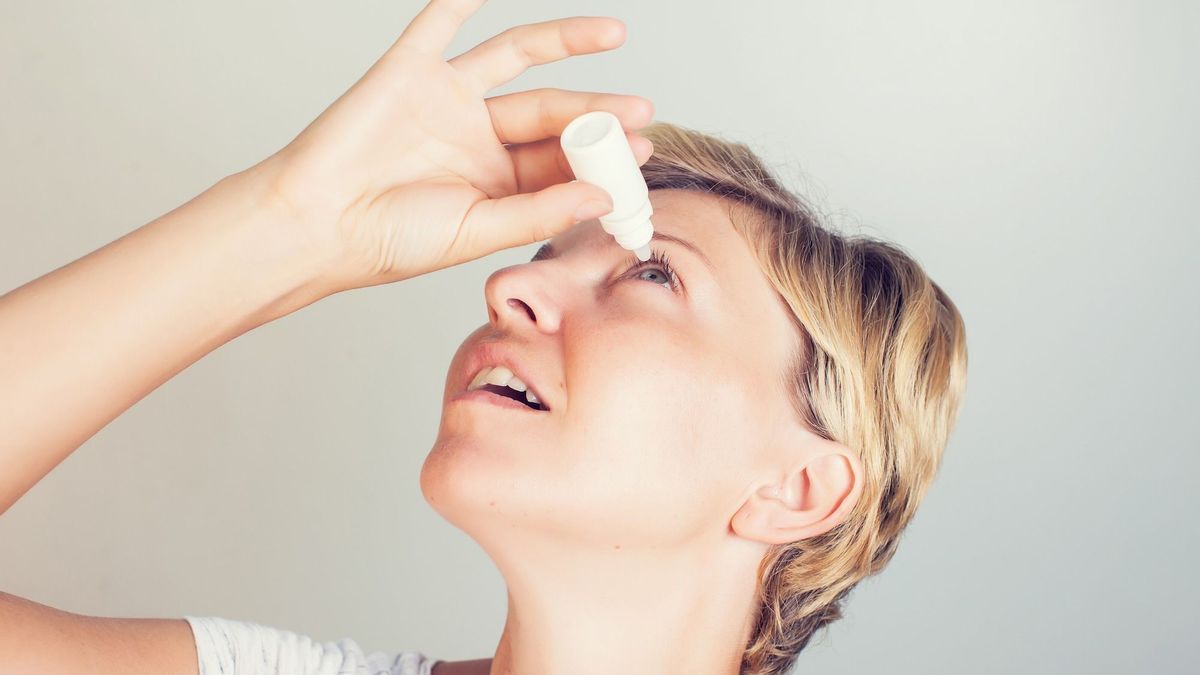
Published on
Updated
What is antibiotic eye drops? How and in what cases should it be used? Can it be given to children? Update with Doctor Cati Albou-Ganem, ophthalmic surgeon.
Antibiotic eye drops: definition
“And Antibiotic eye drops is a biocidal drug used to destroy bacteria or bactericide present in the eyel”, reports Doctor Cati Albou-Ganem, Ophthalmologist Surgeon and also President and Founder of SoFem (Société Ophtalmologique Féminine). It comes in the form of a solution in drops to be applied in the eyes.
There are several classes of antibiotic eye drops. Each of the products below have different mechanisms of action depending on eye infections:
- THE beta-lactams lyse the bacterial wall. The use of these drugs is common in ophthalmologyin particular in the treatment of ocular inflammation;
- THE fluoroquinolones block the duplication and replication of bacteria. The effects of this type of liquid solution are effective in treating maladies ophthalmological;
- THE tetracyclines and the macrolides inhibit bacterial protein synthesis of its RNA (messenger ribonucleic acid). These products mainly have an action in the treatment of eye diseases such as trachome and the newborn conjunctivitis;
- The chloramphénicol also inhibits protein synthesis and this drug only exists in the form of eye ointment;
- THE aminoglycosides also inhibit protein synthesis by inducing errors in the decoding of bacterial RNA;
- THE sulfonamides inhibit the synthesis of folate essential for the synthesis of bacterial DNA. In short, they prevent the bacteria responsible for the infection and irritation of the eye from developing and reproducing;
- The rifamycine inhibits bacterial RNA synthesis. The doctor prescribes it in particular for the treatment of keratitis, conjunctivitis of bacterial origin and corneal ulcers;
- The fosfomycine is a medicine, offered in the form of drops, which inhibits the synthesis of the bacterial wall;
- L’fusidic acid is a drug, presented in the form of an ointment to be applied to the surface of the eye, which also inhibits protein synthesis.
Other classes of antibiotic eye drops exist, but are only available in hospital pharmacies:
- The vancomycin;
- The colistine.
Indication: in which cases should antibiotic eye drops be used?
Antibiotic eye drops are indicated by your doctor as soon as there is a eye bacterial infection from conjunctivaeyelids or cornea (abscess).
Antibiotic treatment with eye drops applied to the surface of the eye may be necessary, particularly in cases of keratitis (a bacterial eye disease causing reddening and tearing of the eyes), bacterial conjunctivitis and corneal ulcers. In these cases, an antibiotic drug such as Tobrex (indicated for adults and children over 1 year old) or Rifamycin will be used.
You can also use antibiotic eye drops prevention of infection likely to harm the health of our eyes. For example, “a beta-lactam (cefuroxime) is systematically injected into the eye at the end ofeye surgery (cataract in particular), which has made it possible to reduce the risk of postoperative infection to almost zero.“, reports Dr. Albou-Ganem.
Eye drops are also used in hospitals for the treatment of intraocular infection.
Antibiotic eye drops: with or without a prescription?
Like any antibiotic, antibiotic eye drops are only available on prescription In Europe”, recalls the eye surgeon. If necessary, your doctor or ophthalmologist will perform a medical prescription (by specifying the dosage, that is to say its use) so that you can obtain, according to its declination, a bottle (or single-dose bottles) or a cream in a pharmacy.
However, some eye infections do not necessarily require the use of antibiotic eye drops, sometimes antiseptic eye drops are sufficient. This is the case for the treatment of viruses such as ocular herpes, for example. Similarly, to treat a conjunctivitis no-gravity type viralthe administration of a antiseptic eye drops is often sufficient.
In the event of an eye infection, it is therefore recommended to consult your doctor beforehand who will advise whether or not a prescription for antibiotics is necessary.
Can antibiotic eye drops also be used for children?
“Antibiotics in the form of eye drops can be used in adults as well as in children”, assures Dr. Albou-Ganem. However, she ponders, “some eye drops are specific for newborns”.
In addition, among the treatments present in the medicine cabinet of young parents, there are frequently antiseptic eye drops sufficient to treat superficial eye infections, but sometimes frequent in babies. Ditto for saline, useful for cleaning the nose and eyes of the toddler.
